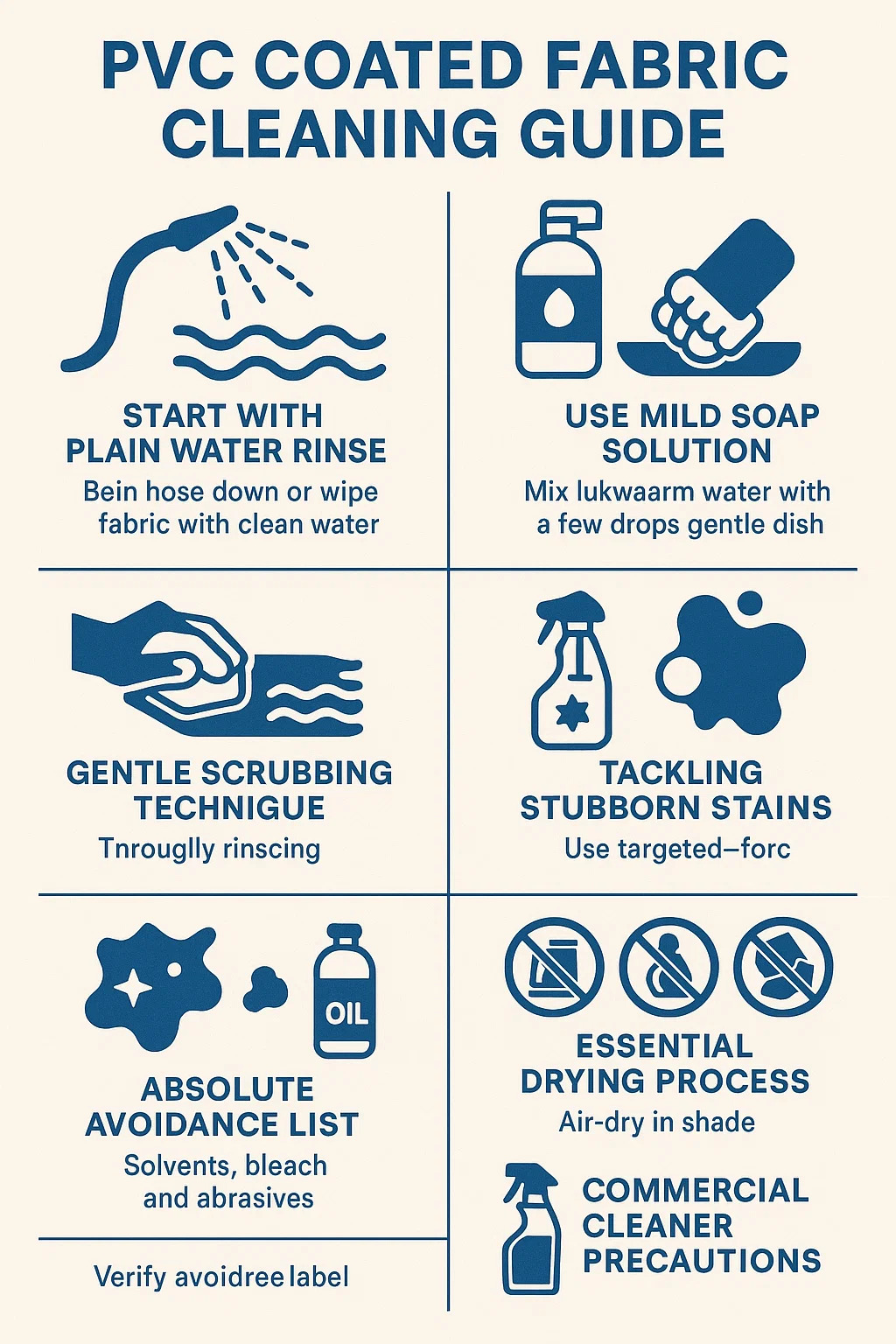Here's a practical guide for cleaning PVC coated fabrics based on common experience and material care:
Content
▸Start with Plain Water Rinse
Begin by hosing down or wiping the fabric with clean water. This removes loose dirt and debris without chemicals. Use a soft-bristle brush for stuck-on particles.
▸Use Mild Soap Solution
For general cleaning, mix lukewarm water with a few drops of gentle dish soap. Avoid detergents with bleach, citrus extracts, or strong degreasers. Apply with a sponge or soft cloth.
▸Gentle Scrubbing Technique
Work in sections using soft circular motions. Don’t scrub aggressively – let the solution loosen grime. Focus on heavily soiled areas but avoid excessive pressure.
▸Thorough Rinsing is Critical
Remove all soap residue completely. Leftover soap attracts dirt and can degrade the coating. Rinse until water runs clear without suds.
▸Tackling Stubborn Stains
Mold/Mildew: Spot-treat with white vinegar and water (1:1 ratio). Apply, wait 10 minutes, then wipe gently. Rinse immediately.
Grease/Oil: Dab undiluted dish soap directly on the stain, gently agitate with fingers, then rinse.
General Stubborn Marks: Paste of baking soda and water can help. Apply, rub lightly with soft cloth, rinse thoroughly.
▸Absolute Avoidance List
▸Never use:
Solvents (acetone, paint thinners)
Bleach or chlorine-based cleaners
Abrasive powders or scouring pads
High-pressure washers (damages seams/coating)
Acidic cleaners (vinegar is exception for mildew only)
▸Essential Drying Process
Air-dry completely in shade before storage or reuse. Hang loosely or spread flat. Trapped moisture causes mildew and coating breakdown.
▸Commercial Cleaner Precautions
If specialty cleaners are needed:
Verify "PVC/vinyl-safe" label
Test on hidden area first
Follow product instructions exactly
Never skip rinsing afterward
Preventative Maintenance
Rinse after exposure to saltwater, chemicals, or heavy dirt. Store fully dry in a cool, ventilated space away from sharp objects.



 English
English Español
Español русский
русский
